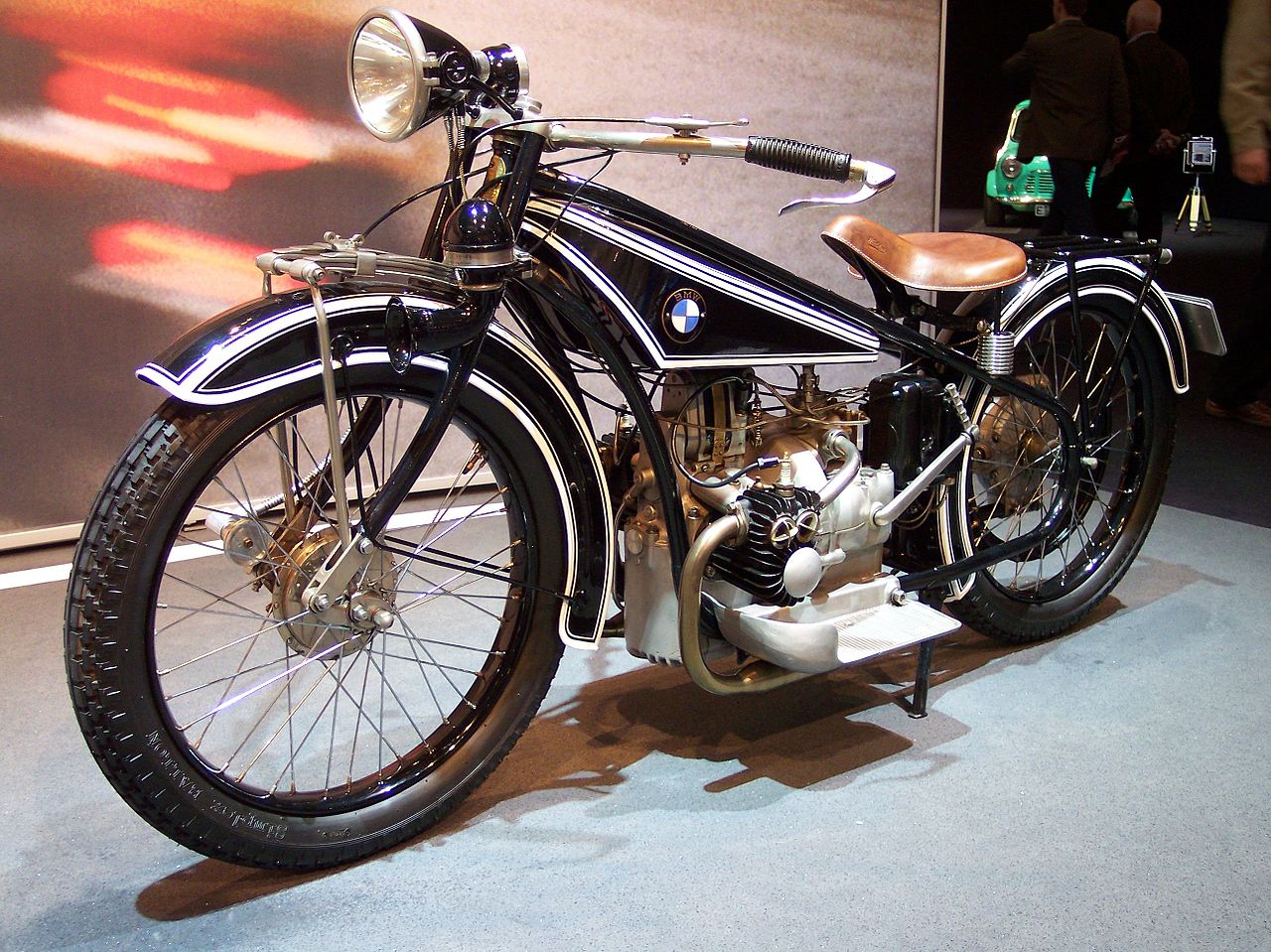02 January, 2017

Starting production in 1923, the R32 was the first motorcycle ever produced by BMW under the BMW name. Created at a difficult turning point for the company, the R32 represented a dramatic shift away from the aircraft they produced before, and kickstarted a long line of BMW motorbikes. Not only this, but it influenced other Bimmer bikes for decades after.
Legendary designer Max Friz worked tirelessly to create the plans for the motorcycle, going through numerous iterations before eventually settling on the the final design for the bike.
With its distinct appearance, revolutionary design for the time, and historical legacy, the BMW R32 is an easy choice for our Classic Bike of the Month.
History of the BMW R32
After WWI, BMW was forced to cease producing aircraft engines because of the restrictions put in place in the signing of the Versailles Armistice Treaty. Instead, BMW shifted its focus to creating motorcycles. One of the first projects for the newly restructured BMW team was the design and manufacture of the flat-twin M2B15 engine for Victoria Werke AG. The engine was eventually used in the Helios motorcycle produced by Bayerische Flugzeugwerke, and later in the BMW AG.
Enter design director Max Friz. Assigned by General Director of BMW, Fanz Josef Popp, to assess the Helios model, Friz eventually declared that the best thing to do with the bike was to throw it in the nearest lake. A change needed to be made, so Friz started work redesigning the Helios.
With the intention of designing a motorbike that would create a solid platform to structure future motorcycle models on, whilst being more saleable than the Helios, It was 1923 when BMW were happy to move into production on the new design.
The R32 first made its debut at the Paris Motorcycle Salon, where it received a positive reaction for its fuel efficient, high quality design.
The R32 demonstrated a number of design firsts, including, most notably, the boxer-twin, shaft-drive powertrain layout, which BMW continue to use today. The R32 represented a solid foundation for the company and kickstarted decades of popular motorcycle production.
About the BMW R32
The BMW R32 used a side-valve 494cc engine, which allowed the motorcycle to reach top speeds of around 59mph. The engine used a 8.5hp head/cylinder unit made with cast-iron.
Most other manufacturers were instead using a total-loss oiling system, but the R32 differed from these through the use of its recirculating wet sump oiling system - which BMW would continue to use for over 40 years.
Other interesting features included cylinder heads which protruded from the motorcycle's engine, in order to provide better cooling. The motorcycle also initially came with rather questionable braking, using just a dummy rim on the rear wheel to provided the bike’s only source of braking.
The bike's design and its infamous shaft drive would continue to have a massive influence of future bikes, including decades of Bimmer bikes. Today, the R32 is well renowned for being an important part of motorcycle history and is well sought-after by collectors and historians alike. Given the motorcycles production at a time which was generally difficult for manufacturers, after the First World War, the R32 successfully created a new market for BMW and incorporated a number of features which would become synonymous with the company for years to come.
The BMW R32 is a treasured artefact from motorcycling history and is definitely something to keep an eye out for at events and with collectors. Tweet us at @Footman_James to join our discussion on this iconic vehicle.

COMMENT